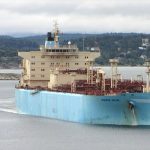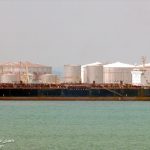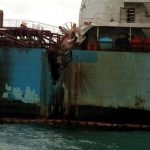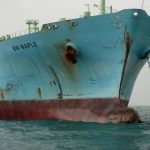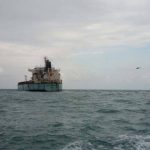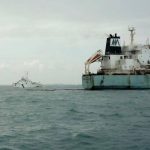Collision off Chennai

The 225 meter long, 58136 dwt LPG tanker BW Maple collided with the 181 meter long, 44885 dwt tanker Dawn Kanchipuram in the Bay of Bengal near Kamaraiar, Chennai, India. The Dawn Kanchipuram was heading towards the port with a cargo of diesel fuel and lube oil when it was struck amidships by the BW Maple which had left port in ballast. The BW Maple’s bow struck just in front of the superstructure on the portside hull.
The Dawn Kanchipuram’s hull was breached and several tons of oil pollution was released into the sea. No reports of injuries. Officials stated the Dawn Kanchipuram proceeded to port and unloaded its cargo.
